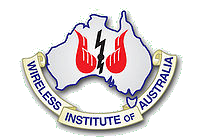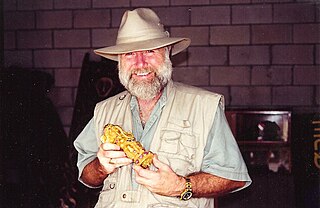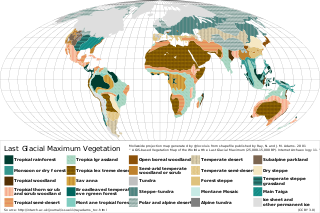Bunbury is a coastal city in the Australian state of Western Australia, approximately 175 kilometres (109 mi) south of the state capital, Perth. It is the state's third most populous city after Perth and Mandurah, with a population of approximately 75,000.

The Wireless Institute of Australia (WIA) was formed in 1910, and is the first and oldest national amateur radio society in the world. It represents the amateur radio operators of Australia as the AR "peak body" in dealings with the Australian Communications and Media Authority (ACMA), the authority under the government of Australia that administers communications within and external to Australia. The WIA publishes a bi-monthly journal for its membership called Amateur Radio. The organisation is the national society representing Australia in the International Amateur Radio Union. The WIA holds regular meetings with the ACMA to inform the Authority on matters concerning the Australian amateur radio community.
This is a timeline of Australian history, comprising important legal and territorial changes and political events in Australia and its predecessor states. To read about the background to these events, see history of Australia.
Australian archaeology is a large sub-field in the discipline of archaeology. Archaeology in Australia takes four main forms: Aboriginal archaeology, historical archaeology, maritime archaeology and the archaeology of the contemporary past. Bridging these sub-disciplines is the important concept of cultural heritage management, which encompasses Aboriginal and Torres Strait Islander sites, historical sites, and maritime sites.
Oxford Archaeology is one of the largest and longest-established independent archaeology and heritage practices in Europe, operating from three permanent offices in Oxford, Lancaster and Cambridge, and working across the UK. OA is a Registered Organisation with the Chartered Institute for Archaeologists (CIfA), and carries out commercial archaeological fieldwork in advance of development, as well as a range of other heritage related services. Oxford Archaeology primarily operates in the UK, but has also carried out contracts around the world, including Sudan, Qatar, Central Asia, China and the Caribbean. Numbers of employees vary owing to the project-based nature of the work, but in 2023 OA employed over 350 people.

The southern mud oyster, Australian flat oyster, native flat oyster, native mud oyster, or angasi oyster, is endemic to southern Australia, ranging from Western Australia to southeast New South Wales and around Tasmania. Ostrea angasi superficially resembles Ostrea edulis and both species may be referred to with the name "flat oyster". However, the two species do not occur naturally in the same geographic distribution.

Edward Lee Spence is a German-born American archaeologist. He is a specialist in the field of underwater archaeology.
Sass, Saß or SASS may refer to:

Last Glacial Maximum refugia were places (refugia) in which humans and other species survived during the Last Glacial Period, around 25,000 to 18,000 years ago. Glacial refugia are areas that climate changes were not as severe, and where species could recolonize after deglaciation.
The following outline is provided as an overview of and topical guide to anthropology:

Loch Vennachar was an iron-hulled, three-masted clipper ship that was built in Scotland in 1875 and lost with all hands off the coast of South Australia in 1905. She spent her entire career with the Glasgow Shipping Company, trading between Britain and Australia. The company was familiarly called the "Loch Line", as all of its ships were named after Scottish lochs. The ship was named after Loch Venachar, in what was then Perthshire.

Burrill Lake is a small village on the Princes Highway in the South Coast region of New South Wales, Australia. It is a seaside suburb of the Milton-Ulladulla district, a part of the City of Shoalhaven local government area and surrounds the lake of the same name. In 2021, Burrill Lake had a population of 1,782. The name of the town is derived from an Aboriginal word meaning 'wallaby'.

Broughton Island is an island 14 km north-east of Port Stephens on the Mid North Coast of New South Wales, Australia. It is part of the Myall Lakes National Park.

Pakefield is a suburb of the town of Lowestoft, in the East Suffolk district of Suffolk, England. It is located around 2 miles (3.2 km) south of the centre of the town. It 2011 the ward had a population of 6,563.
Peter John Frazer Coutts was an Australian archaeologist who was first director of the Victoria Archaeological Survey (VAS), the precursor to the Heritage Branch of Aboriginal Affairs Victoria.

Agnes Milowka was an Australian technical diver, underwater photographer, author, maritime archaeologist and cave explorer. She gained international recognition for penetrating deeper than previous explorers into cave systems across Australia and Florida, and as a public speaker and author on the subjects of diving and maritime archaeology. She died aged 29 while diving in a confined space.
The Society for Underwater Historical Research (SUHR) was an amateur maritime archaeology organisation operating in South Australia (SA). It was formed in 1974 by recreational scuba divers and other persons to pursue an interest in maritime archaeology and maritime history. The SUHR was renamed as the South Australian Archaeology Society in March 2012 as part of a plan to expand its activities beyond maritime archaeology to include other archaeological disciplines.
The Contemporary Art Centre of South Australia (CACSA), formerly Contemporary Art Society (CAS), was an art museum and art space located in the Adelaide suburb of Parkside, in South Australia. In late 2016 it merged with the Australian Experimental Art Foundation to form ACE Open.

Intersex Day of Remembrance, also known as Intersex Solidarity Day, is an internationally observed civil awareness day designed to highlight issues faced by intersex people. It marks the birthday of Herculine Barbin, a French intersex person whose memoirs were later published by Michel Foucault in Herculine Barbin: Being the Recently Discovered Memoirs of a Nineteenth-century French Hermaphrodite.
Diver organisations are membership based organisations where the membership is wholly, or at least in large part, underwater divers, and the organisation is intended to further a mutual interest related to underwater diving or the aquatic environment as it affects divers or diving activity. Some organisations have more than one focus of interest.









